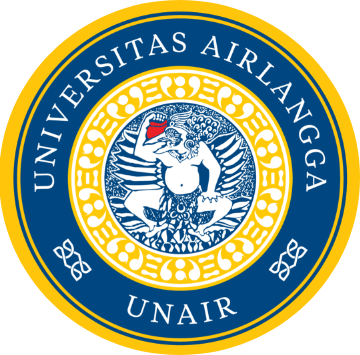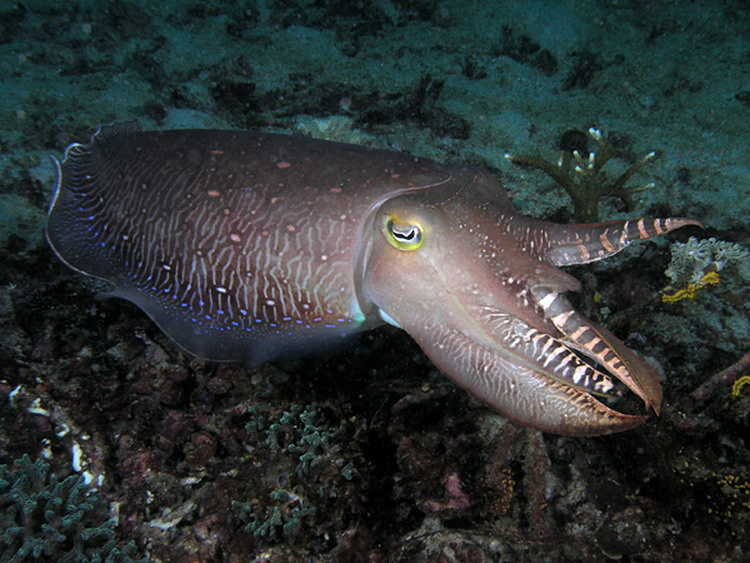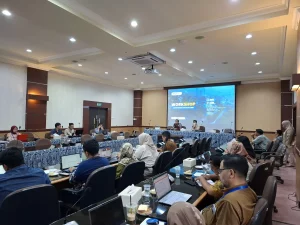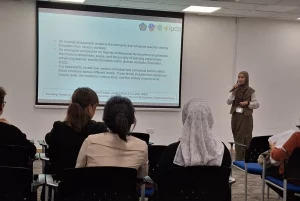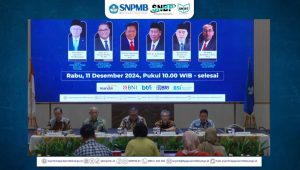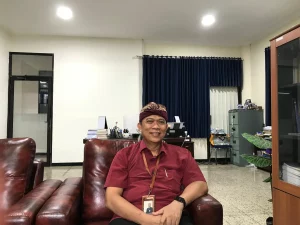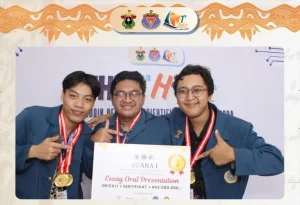Indonesia is a maritime country because 70 percent of its territory is water. The oceans contain a lot of mineral and biological potential that can be utilized for people’s welfare. Biodiversity in Indonesia consists of coral reefs, fish, mangroves, and other organisms. One type of fish found in our marine waters is cuttlefish.
Cuttlefish contain calcium in the form of CaCO 3 by 85 percent. All this time cuttlefish bone is only used as bird feed because of its calcium content. To increase the usefulness of this cuttlefish, the idea was to use the high calcium content as bone injury filling material.
Bone injury is a serious health problem because the bone is a very important component in the human body as a support for bodily functions. Bone injury can be caused by various factors, both internal and external.
Internal factors that can cause bone damage include tumor disease, malnutrition of vitamins and minerals, and age, while external factors include trauma that causes fractures or other bone deformities.
Cases of fractures causing bone loss and damage require substantial bone replacement material. The material used must be biocompatible, not corrosive, has mechanical and physical properties that are in accordance with its function. This material is called a biomaterial. Biomaterials can be made from natural resources. Natural materials are used as biomaterials because of their good biocompatibility aspects. This biocompatibility is an absolute requirement that must be met by biomaterials to be accepted by the human body and does not cause rejection from the body’s immune system.
Hydroxyapatite (HA) with the chemical formula Ca 10 (PO 4 ) 6 (OH) 2 is widely used as a bone defect filler because of its bioactive and osteoconductive properties which can support bone remineralization because it can stimulate bone cell growth. This material can induce a biological response during bone formation by absorbing the body’s bone mineral compared with new bone formation.

HA is a biocompatible material, does not react with other parts of the body and blend with bone. Calcium phosphate contained in HA plays a role in bone mineralization. The process begins with the presence of calcium deposition in the organic bone matrix, which occurs when local concentrations of Ca 2+ and PO 4 3- are above the threshold value.
Method and Results
We made HA using CaCO 3 taken from cuttlefish bones. Firstly 1M CaCO 3 was mixed with NH 4 H 2 PO 4 0.6 M using a magnetic stirrer for 30 minutes. The mixture was transferred to the reactor and put into an electric oven to be heated for 12 hours at 200 0 C. The sample was cooled down at room temperature. Samples were rinsed with distilled water repeatedly until they reached a neutral pH (pH = 7). Final rinsing using methanol which aims to limit agglomeration of HA particles during the drying process. Then the sample is filtered, then dried in an electric oven at a temperature of 50 0C. After the drying process, the sample is sintered at 900 0 C for 1 hour using the furnace to form HA.
Cuttlefish HA samples were then tested in vivo in white rats within four weeks and eight weeks to determine the inflammatory tissue responses, cell proliferation, callus formation, callus reinforcement (ossification), and bone remodeling.
The synthesis of HA from cuttlefish shows that the best quality HA in terms of crystallinity, compressive strength and cytotoxicity was obtained from the results of the hydrothermal process at 200 0 C for 12 hours followed by the sintering process at 900 0 C for 1 hour. HA produced from this study is feasible to be applied as a bone graft, especially for cancellous bones because of the highest compressive strength was (11,799 ± 0,00057) MPa which is in the range of cancellous bones.
In vivo test results in white rats showed that HA from cuttlefish had an effect on the process of bone growth with the formation of osteoblasts, osteoclasts, woven bone, lamellar bone, havers system until bone repair occurred. The administration of HA affects healing time.
The best healing time for bone formation occurs on day 56. The longer the healing time, the more new bone is formed, or complete regeneration occurred. HA from cuttlefish produces the same effect as HA from bovine bone, so HA from cuttlefish can be used as an alternative bone filler other than bovine bone for bone regeneration due to bone injury.
Author: Aminatun
Full article available at:
Research (Published online: 14-06-2019)
In vivo approach on femur bone regeneration of white rat (Rattus norvegicus) with the use of hydroxyapatite from cuttlefish bone (Sepia spp.) as bone filler
Aminatun Aminatun, Fadhilah D.E. Handayani, Prihartini Widiyanti, Dwi Winarni and Siswanto Siswanto
Veterinary World, 12(6): 809-816

